NAVYPEDIA
 Support the project with paypal
Support the project with paypal
Photo

Bévéziers 1980 Many thanks to Wolfgang Stöhr for additional information on this page.
Ships
| Name | No | Yard No | Builder | Laid down | Launched | Comp | Fate |
|---|---|---|---|---|---|---|---|
| Agosta | S620 | Q80 | Arsenal de Cherbourg | 10.11.1972 | 19.10.1974 | 28.7.1977 | decommissioned 2.1997, deleted 2009 |
| Bévéziers | S621 | Q81 | Arsenal de Cherbourg | 17.5.1973 | 14.6.1975 | 27.9.1977 | decommissioned 2.1998, deleted 2009 |
| La Praya | S622 | Q82 | Arsenal de Cherbourg | 1974 | 15.5.1976 | 9.3.1978 | decommissioned 6.2000, deleted 2009 |
| Ouessant | S623 | Q83 | Arsenal de Cherbourg | 1974 | 23.10.1976 | 27.7.1978 | decommissioned 7.2001, TS for Malaysia 2005 |
Technical data
| Displacement standard, t | 1250 |
|---|---|
| Displacement normal, t | 1510 / 1760 |
| Length, m | 67.6 |
| Breadth, m | 6.80 |
| Draught, m | 5.40 |
| No of shafts | 1 |
| Machinery | 2 SEMT-Pielstick 16PA4 V185VG diesel-generators, 1 electric motor |
| Power, h. p. | 4600 |
| Max speed, kts | 12.5 / 20 |
| Fuel, t | diesel oil 185 |
| Endurance, nm(kts) | 8500(9) (snorkel) / 280(3) |
| Armament | 4 - 550 TT (bow, 20) |
| Electronic equipment | DRUA-33 radar, DUUA-1D, DUUA-2D, DUUX-2A sonars, ARUR, ARUD ECM suites, DLA D3 CCS |
| Complement | 54 |
| Diving depth operational, m | 300 |
Standard scale images

La Praya 1990
Graphics
Project history
These ocean-going submarines were of double-hull construction, the space between the two hulls was used for ballast, fuel tanks, auxiliary tanks and for the sensing heads of most of the acoustic equipment. The outer shell was cylindrical, graduating to an oval form forward to accommodate the sensors. The profile was more streamlined than that of earlier French submarines, and influenced the design of the SNA of the Rubis class. All deck fittings retracted into recesses in the outer casing to improve waterflow. The forward diving planes were close to the bow, and were complemented by cruciform control surfaces aft.
The propulsion system featured a 320-cell battery with twice the capacity of the Daphné class. The maximum underwater speed of 17.5kts can be sustained for one hour, and can be boosted to 20.5kts for 5 minutes to enable the submarine to take evasive action. In addition to the main electric motor there was a small 32hp 'creep' motor for silent operations, capable of driving the submarine at 3.5kts.
The reduction to only four torpedo tubes was made possible by the high hit probability of modem wire-guided torpedoes. The tubes employed a pneumatic ram to discharge the torpedo, enabling firing to take place at any speed or depth. They can accept both 550mm and 533mm torpedoes. Bévéziers was the trials boat for the SM39 submarine-launched variant of the Exocet SSM, and the remaining three units of the class had since been retro-fitted with this capability.
Modernizations
1985-1987, all: + ability to launch SM39 Exocet SSM (4 SM39)
1988-1991, all: - DRUA-33 radar, DUUA-1D sonar, ARUR ECM suite; + DRUA-33C radar, DSUV-22C, DSUV-62A towed array sonars, ARUR-12 ECM suite
Naval service
No significant events.
Many thanks to Wolfgang Stöhr for additional information on this page.
 HOME
HOME FIGHTING SHIPS OF THE WORLD
FIGHTING SHIPS OF THE WORLD FRANCE
FRANCE SUBMARINES
SUBMARINES AGOSTA attack submarines (1977 - 1978)
AGOSTA attack submarines (1977 - 1978)
